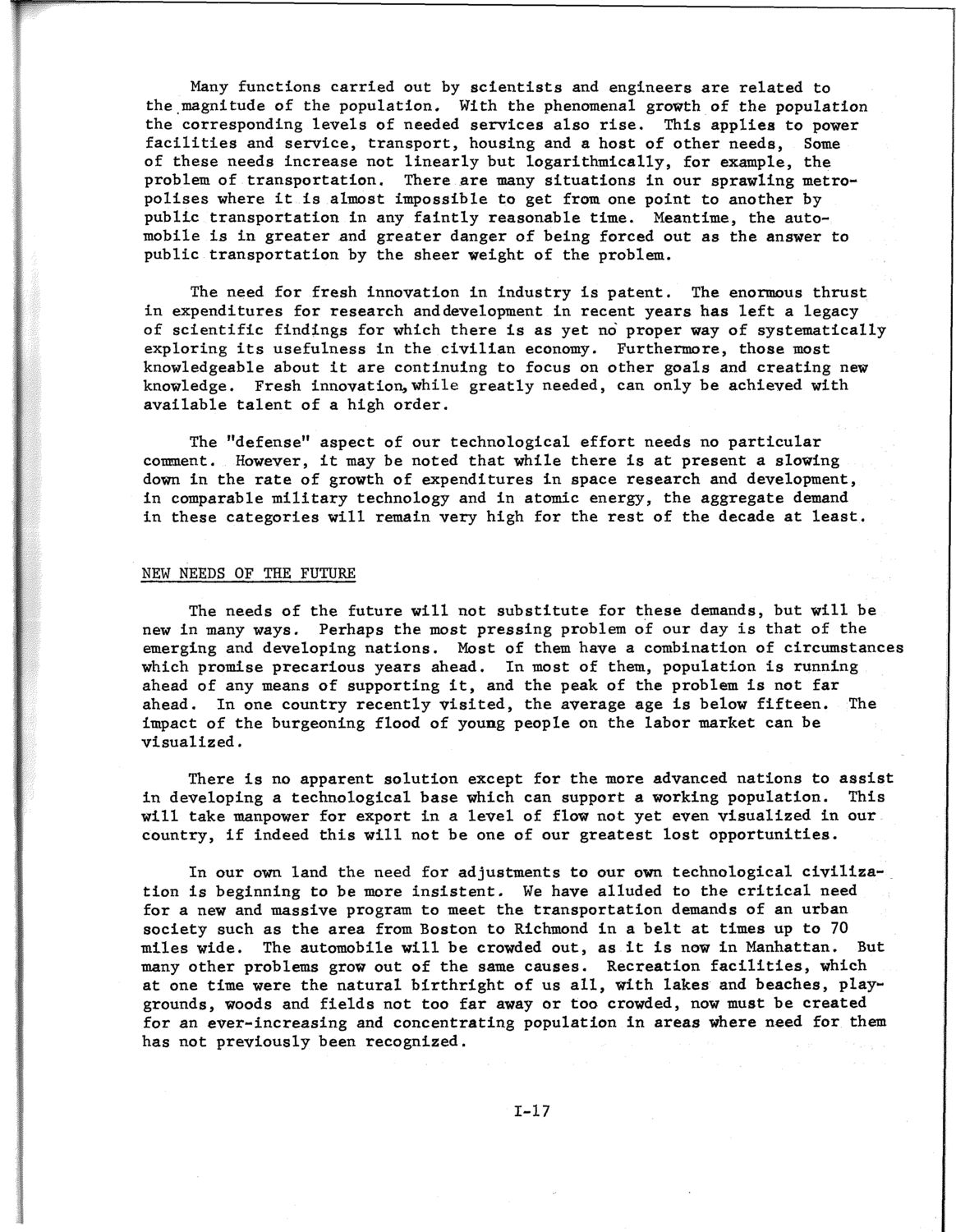| |
| |
Caption: SWE - Proceedings of the First International Conference of Women Engineers and Scientists
This is a reduced-resolution page image for fast online browsing.

EXTRACTED TEXT FROM PAGE:
Many functions carried out by scientists and engineers are related to the magnitude of the population. With the phenomenal growth of the population the corresponding levels of needed services also rise. This applies to power facilities and service, transport, housing and a host of other needs, Some of these needs increase not linearly but logarithmically, for example, the problem of transportation. There are many situations in our sprawling metropolises where it is almost impossible to get from one point to another by public transportation in any faintly reasonable time. Meantime, the automobile is in greater and greater danger of being forced out as the answer to public transportation by the sheer weight of the problem. The need for fresh innovation in industry is patent. The enormous thrust in expenditures for research and development in recent years has left a legacy of scientific findings for which there is as yet no proper way of systematically exploring its usefulness in the civilian economy. Furthermore, those most knowledgeable about it are continuing to focus on other goals and creating new knowledge. Fresh innovation, while greatly needed, can only be achieved with available talent of a high order. The "defense" aspect of our technological effort needs no particular comment. However, it may be noted that while there is at present a slowing down in the rate of growth of expenditures in space research and development, in comparable military technology and in atomic energy, the aggregate demand in these categories will remain very high for the rest of the decade at least. NEW NEEDS OF THE FUTURE The needs of the future will not substitute for these demands, but will be new in many ways. Perhaps the most pressing problem of our day is that of the emerging and developing nations. Most of them have a combination of circumstances which promise precarious years ahead. In most of them, population is running ahead of any means of supporting it, and the peak of the problem is not far ahead. In one country recently visited, the average age is below fifteen. The impact of the burgeoning flood of young people on the labor market can be visualized. There is no apparent solution except for the more advanced nations to assist In developing a technological base which can support a working population. This will take manpower for export in a level of flow not yet even visualized in our country, if indeed this will not be one of our greatest lost opportunities. In our own land the need for adjustments to our own technological civilization is beginning to be more insistent. We have alluded to the critical need for a new and massive program to meet the transportation demands of an urban society such as the area from Boston to Richmond in a belt at times up to 70 miles wide. The automobile will be crowded out, as It is now in Manhattan. But many other problems grow out of the same causes. Recreation facilities, which at one time were the natural birthright of us all, with lakes and beaches, playgrounds, woods and fields not too far away or too crowded, now must be created for an ever-increasing and concentrating population in areas where need for them has not previously been recognized. 1-17
| |